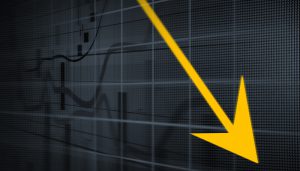

14.01.2022 – There is no escape: After consumer prices, producer prices are also sending an acute warning signal to the stock market. Interest rate fear everywhere. And now, of all times, the biggest ports in China are facing new Corona problems – a new shock in the supply chain. The bears are celebrating.
Producer prices rise as last seen in 1983
Meanwhile, the view is solidifying on the trading floor that the Federal Reserve will raise interest rates not just three times this year, but four. With a first rate hike in March. And some stockbrokers believe the Fed is making a huge mistake by doing so and stalling the economy. Just as it had already classified inflation initially only as a transitional phenomenon.
There they are, the signals of what is likely to come: U.S. inflation is at 7 percent. The Producer Price Index moved up 9.7 percent year-over-year in December. The PPI thus reached a 39-year high. It’s only a matter of time before consumers start feeling the pinch of higher producer prices in their household budgets.
Interest rate fears rage
A look at the details reveals the political and economic explosive nature of this statistic: The sub-index for producer prices for fuels and lubricants rose by a whopping 13 percent. Those who need their cars are impoverished. By contrast, the subindex for automobiles and spare parts fell by 2.7 percent – so people are saving and not buying a new vehicle. The increased saving will sooner or later lead to a recession in the industry.
The price increase is fodder for the Fed: After all, the U.S. Federal Reserve had already warned of an exit from quantitative easing and higher interest rates. Accordingly, prices on the Nasdaq and the S&P 500 in particular dipped. Unprofitable tech stocks in particular were thrown onto the market. We had already pointed out the dangers for these stocks: Those on credit have to fear higher interest rates. The SPX now hangs trembling in the 50-day line. And the inflation hedge Bitcoin is also far from the all-time high in the region of 43,000. Which is probably due to expectations for rising interest rates.
Interest rate turnaround behind the scenes
Another interesting interest rate turnaround factlet: 30-year mortgage rates in the U.S. are picking up. They have now reached 3.52 percent. In early December 2020, it had been 2.85 percent. What does that tell us? Mortgage lenders are now able to push through higher interest rates because home builders are assuming interest rates will rise and prefer to take out a loan now.
Supply shock in China
And now, of all times, a new bad news from China reaches the brokers: In the Middle Kingdom, the crisis in the supply chains is coming to a head because of the Omikron variant. According to Bloomberg, the important Chinese cargo port Ningbo south of Shanghai – the third largest container port in the world – is cancelled. Freight forwarders are stopping work because of Corona. Shipping companies are diverting their ocean liners to Shanghai and Xianmen – but these ports are already overloaded. This is likely to further fuel prices.
The question in this mixed bag is whether we will see a countermovement after the recent small sell-off. Or whether investors prefer to get out before the weekend. Bernstein Bank wishes you good luck with your trades and investments!
Important Notes on This Publication:
The content of this publication is for general information purposes only. In this context, it is neither an individual investment recommendation or advice nor an offer to purchase or sell securities or other financial products. The content in question and all the information contained therein do not in any way replace individual investor- or investment-oriented advice. No reliable forecast or indication for the future is possible with respect to any presentation or information on the present or past performance of the relevant underlying assets. All information and data presented in this publication are based on reliable sources. However, Bernstein Bank does not guarantee that the information and data contained in this publication is up-to-date, correct and complete. Securities traded on the financial markets are subject to price fluctuations. A contract for difference (CFD) is also a financial instrument with leverage effect. Against this backdrop, CFD trading involves a high risk up to the point of total loss and may not be suitable for all investors. Therefore, make sure that you have fully understood all the correlating risks. If necessary, ask for independent advice. CFDs are complex instruments and are associated with the high risk of losing money quickly because of the leverage effect. 68% of retail investor accounts lose money trading CFD with this provider. You should consider whether you understand how CFD work and whether you can afford to take the high risk of losing your money.
